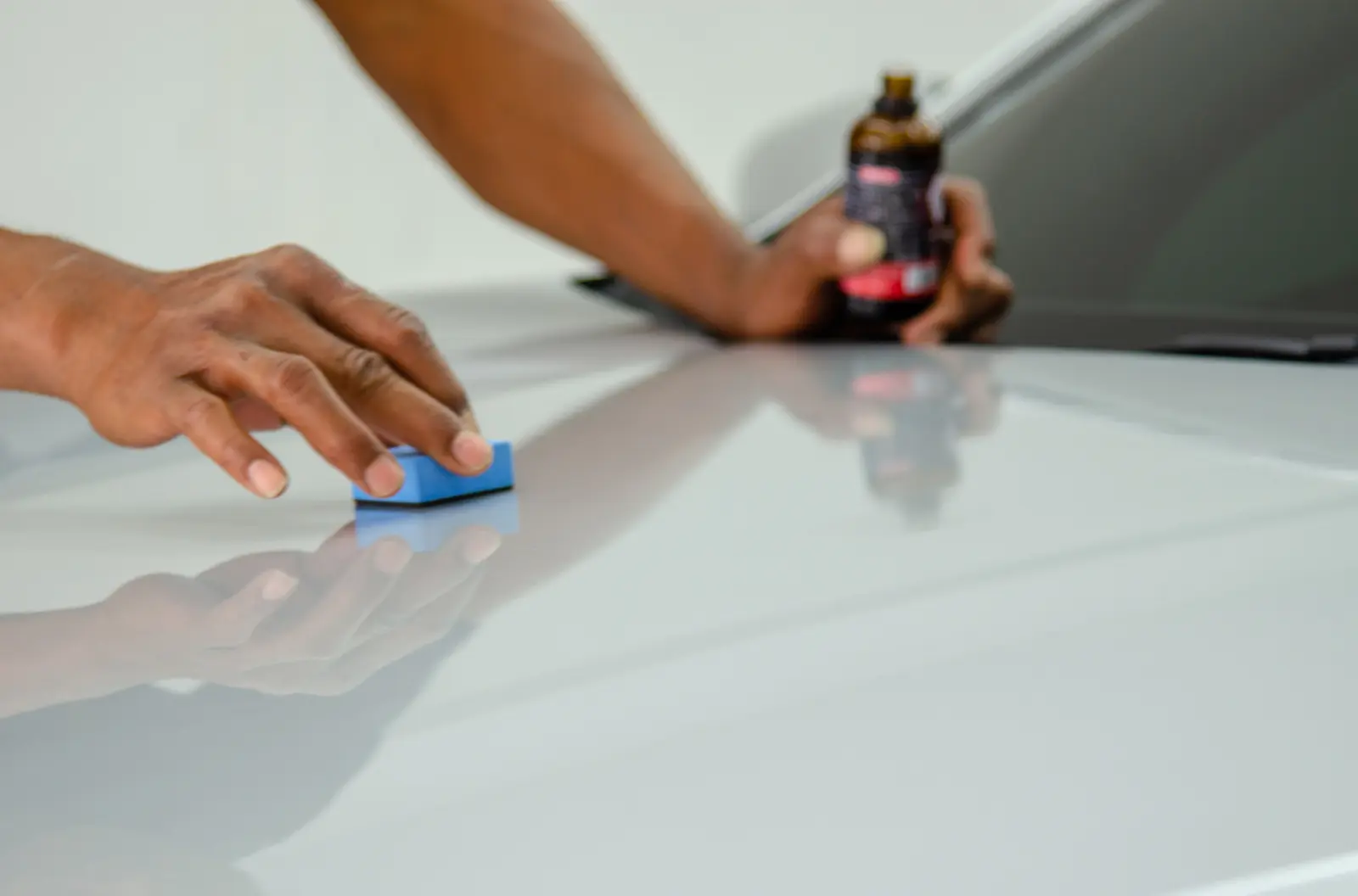What is ceramic coating?
Ceramic coating is a liquid polymer applied to the exterior of a vehicle to provide a layer of protection. It chemically bonds with the factory paint, creating a hydrophobic surface that repels water, dirt, and contaminants.
How does ceramic coating work?
Ceramic coating works by forming a strong, semi-permanent bond with the vehicle’s paint. This bond creates a protective layer that is resistant to environmental contaminants, UV rays, and minor scratches.
What does a ceramic coating do?
Ceramic coating protects the vehicle’s paint from damage caused by UV rays, oxidation, and environmental contaminants. It also makes the surface easier to clean by repelling water, dirt, and grime.
What is ceramic non-stick coating?
Ceramic non-stick coating is a type of coating used on cookware to provide a non-stick surface. It is made from a silica-based gel that creates a smooth, non-reactive surface.
What is ceramic coating cookware?
Ceramic coating cookware refers to pots and pans that have a ceramic coating on their cooking surface. This coating provides a non-stick surface that is free of harmful chemicals found in traditional non-stick coatings.
What is ceramic coating on cookware?
Ceramic coating on cookware is a layer of ceramic material applied to the cooking surface to create a non-stick, non-reactive surface that is safe for cooking.
What is ceramic coating made of?
Ceramic coating is typically made of silica (SiO2), titanium dioxide (TiO2), and other nano-ceramic particles suspended in a liquid polymer.
How safe is ceramic coated cookware?
Ceramic coated cookware is considered safe for cooking as it is free from harmful chemicals like PTFE and PFOA. It provides a non-reactive, non-stick surface that does not release toxic fumes.
What is the downside to ceramic coating?
The downside to ceramic coating is its cost, which can be relatively high. Additionally, while it offers excellent protection, it is not completely scratch-proof and may require professional application.
Why is ceramic coating so expensive?
Ceramic coating is expensive due to the cost of high-quality materials and the labor-intensive process required for proper application. Professional application ensures the coating bonds correctly and provides maximum protection.
How long does it take for ceramic coating to cure?
Ceramic coating typically takes about 24 to 48 hours to cure initially. Full curing can take up to 2 weeks, depending on the environmental conditions.
How to maintain ceramic coating?
Maintain ceramic coating by regularly washing the vehicle with a pH-neutral shampoo, avoiding harsh chemicals, and using a microfiber cloth for drying. Avoid automatic car washes with brushes.
What should you not do after ceramic coating?
After applying ceramic coating, avoid washing the vehicle for at least 7 days to allow the coating to fully cure. Do not use abrasive or acidic cleaners that could damage the coating.
Can you apply ceramic coating over ceramic coating?
Yes, you can apply ceramic coating over an existing ceramic coating to enhance protection and gloss. Ensure the surface is clean and free of contaminants before reapplication.
Can you wax over ceramic coating?
It is not necessary to wax over ceramic coating, as the coating itself provides a glossy, protective finish. Waxing can interfere with the hydrophobic properties of the ceramic coating.
Can you use spray wax on ceramic coating?
Yes, you can use spray wax on ceramic coating, but it is generally not needed. If used, ensure the spray wax is compatible with ceramic coatings.
What is the best ceramic coating?
The best ceramic coating depends on your specific needs and preferences. Some popular brands include Ceramic Pro, Gtechniq, and CQuartz.
Can you put ceramic coating on a windshield?
Yes, ceramic coating can be applied to windshields to improve water repellency and visibility during rain.
Can you ceramic coat vinyl wrap?
Yes, you can apply ceramic coating to vinyl wrap to enhance its durability, UV protection, and ease of cleaning.
Can you ceramic coat PPF?
Yes, ceramic coating can be applied over Paint Protection Film (PPF) to add an extra layer of protection and enhance the film’s hydrophobic properties.
Can you put PPF over ceramic coating?
It is generally recommended to apply PPF first and then ceramic coating. Applying PPF over ceramic coating can affect the adhesive properties of the film.
Can you put graphene over ceramic coating?
Yes, graphene coatings can be applied over ceramic coatings to provide additional protection and enhanced performance.
What is better PPF or ceramic coating?
PPF and ceramic coating serve different purposes. PPF offers superior protection against physical damage, while ceramic coating provides excellent protection against environmental contaminants and enhances gloss.
Ceramic coating or PPF, which is best for bike?
For a bike, ceramic coating is often preferred for its ease of maintenance and excellent protection against the elements. PPF can be used for high-impact areas.
Can you put ceramic coating on tires?
Yes, ceramic coating can be applied to tires to enhance their appearance and make them easier to clean, though it is less common compared to other surfaces.
Contact Us
Questions or looking for a quote?





